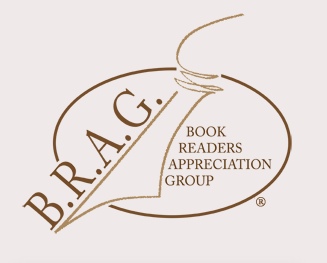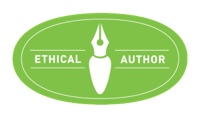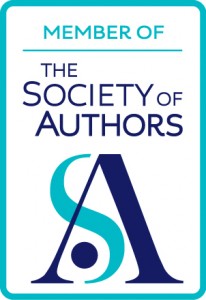 Not steampunk, but creative imagination expanding our ideas of exploration… Not steampunk, but creative imagination expanding our ideas of exploration…
Lagos, in the Algarve, was the harbour from which Prince Henry the Navigator’s maritime explorers set off in the early 1400s to discover the unknown world. Portuguese sailors were at the vanguard of this European Age of Discoveries during the 15th and 16th centuries, finding and mapping the coasts of Africa, Asia and Brazil.
 Organised expeditions started in 1419 along West Africa’s coast, reaching the Cape of Good Hope and entering the Indian Ocean in 1488. Ten years later, Vasco da Gama led the first fleet around Africa to India, arriving in Calicut and starting a maritime route from Portugal to India. Soon, after reaching Brazil, explorations followed to southeast Asia and reached Japan in 1542. Organised expeditions started in 1419 along West Africa’s coast, reaching the Cape of Good Hope and entering the Indian Ocean in 1488. Ten years later, Vasco da Gama led the first fleet around Africa to India, arriving in Calicut and starting a maritime route from Portugal to India. Soon, after reaching Brazil, explorations followed to southeast Asia and reached Japan in 1542.
The figures on the roof of 17th century Fort of Ponta da Bandeira which guarded the harbour entrance in Lagos seem bizarre to the modern visitor, out of keeping with the fort and certainly with the 1400s of Henry the Navigator.
 But look again. But look again.
Their strange figures driving even stranger craft startle us. Perhaps they’re challenging us to look back at exploration in a different way and to think forward creatively, to explore with our minds into the future.
Have you experienced this type of creative link?
If you enjoyed this post, do share it with your friends!Like this:Like Loading...
 What connects a Wallsend metro station, an ATM in the Vatican City, Asterix and Wikipedia? What connects a Wallsend metro station, an ATM in the Vatican City, Asterix and Wikipedia?
Latin, of course!
Originating in Italy, it was spoken in Ancient Rome and spread through the Mediterranean into much of the then known world. Although now considered a dead language, many students, scholars, and members of the Christian clergy speak it fluently, and it is still taught in some primary, secondary and many post-secondary educational institutions around the world.
Latin is still used in the creation of new words including in English, and in biological names. Changing versions between vulgar Latin and Classical Latin, declining into a misspelled medieval form, revived and refined in the Renaissance period, it was used as the international language of communication until well into the eighteenth century.
 Apart from the spells of Harry Potter et al, the mottoes of many American states and plant labels, Latin crops up today in some off-beat places. Apart from the spells of Harry Potter et al, the mottoes of many American states and plant labels, Latin crops up today in some off-beat places.
Wallsend Metro station is the only public facility in Britain in which the signage is in Latin. This is a nod to its location near the Segedunum Roman fort at the end of Hadrian’s Wall. The station also includes a number of photographs of local shops and facilities which have been digitally altered so that their names appear in Latin.

The Vatican City is also home to the world’s only ATM that gives instructions in Latin.

Asterix is the famous cartoon character featured in the works of Uderzo and Goscinny. The comic but stouthearted Gaulish warrior is always getting one over the Romans. Not quite sure what he’d make of himself speaking Latin, especially as a legionary
 Vicipaedia Latina is the Latin language edition of Wikipedia. As of November 2012, it has about 82,000 articles. Content is in Latin, but discussions are run in modern languages such as English, French, German or Spanish since many users find this easier. Vicipaedia Latina is the Latin language edition of Wikipedia. As of November 2012, it has about 82,000 articles. Content is in Latin, but discussions are run in modern languages such as English, French, German or Spanish since many users find this easier.
Wikipedia reports, ‘Professional latinists have observed a gradual improvement in the encyclopedia: according to Robert Gurval, chairman of the UCLA classics department, “the articles that are good are in fact very good,” even though some articles by beginning students contain grammatical errors.
The Latin Wikipedia began dominated by topics from classical history, but beginning in 2006 a group of new contributors greatly expanded the coverage of 20th-century topics, such as pop culture and technology.’
Attributions:
Wallsend – Courtesy of Chris McKenna [CC-BY-SA-3.0-2.5-2.0-1.0 (http://creativecommons.org/licenses/by-sa/3.0)], via Wikimedia Commons
Vatican ATM – Courtesy of Seth Schoen [CC-BY-SA-2.0 (http://creativecommons.org/licenses/by-sa/2.0)], via Wikimedia Commons
Alison Morton is the author of Roma Nova thrillers, INCEPTIO, and PERFIDITAS. Third in series, SUCCESSIO, is out now.
If you enjoyed this post, do share it with your friends!Like this:Like Loading...
 The scene: A book industry party The scene: A book industry party
Present: New authors, multi-published authors, agents, editors, publishers, guests, even spouses
A first conversation:
Sensible and Friendly Author to agent: “Don’t worry, I’m not pitching because my book isn’t ready yet.”
Sensible and Savvy Agent: “If I was worried about people pitching to me I wouldn’t come to a party like this.”
Both smile and carry on chatting.
A second conversation:
Desperate and Determined Author to Sensible and Savvy Agent: “My book’s about XYZ and I know it’s going to be a great success. It starts at the end of the First World War and the heroine is called Daisy and she had a daughter who’s called Peggy and she has twins called Maggie and Edith and….
[Ten minutes later]
Sensible and Savvy Agent (with rictus on face and desperate for a drink) to Desperate and Determined Author: “Why don’t you send in three chapters? You’ll find all the details on our website.”
Desperate and Determined Author: “….and then great aunt Getrude comes back from India with a new husband and…”
Sensible and Savvy Agent: “Send it in, then. If you’ll excuse me, I must get on.” Turns, searches desperately for a sympathetic face, spots Sensible and Friendly Author who rides to the rescue suggesting now is the time for more wine. Both head off at rapid pace for the bar.
Industry professionals are human. Some of them attend parties because writers’ associations throw brilliant social bashes. They can meet colleagues and clients on neutral ground and informally. But it would be naive not to think that most agents and editors are there to meet writers, possibly spot new talent and, ultimately, to be pitched to.
But there’s a way to do it:
- Wait for the previous conversation to finish.
- Don’t be over pushy or rude.
- Don’t pitch for more than 2 to 3 minutes. Let the agent/editor respond.
- When an editor or agent asks an encouraging question, they mean it. Go for it by a short answer like, “Rom-com with a twist,” inviting the response, “What sort of twist?” If the response is, “I hope it’s going well,” with a glazed look, it’s probably not going to work.
- Watch for the signs that the agent/publisher wishes to finish the conversation and move on gracefully.
You don’t want to gain the reputation of being a pest, because a pest at a party is probably going to be a pest to work with. Editors and agents gossip amongst hemselves. You don’t want to be the one referred to as, “Oh, her! She trapped me in a corner at a do and tried to tell me the whole plot of her book. I had to spill my drink down myself to escape.”
After your short pitch, a professional follow-up letter within the week with your submission package mentioning meeting the agent/editor at the party and thanking them for their time is the best next step.
Although literary parties give you an opportunity to meet new people and network with those you already know, they are a place where good manners and restraint matter most.
That is, if you want to succeed in seeing your book published.
Alison Morton is the author of Roma Nova thrillers, INCEPTIO, PERFIDITAS, SUCCESSIO and AURELIA. The fifth in the series, INSURRECTIO, was published in April 2016.
Find out more about Roma Nova, its origins, stories and heroines…
If you enjoyed this post, do share it with your friends!Like this:Like Loading...
 The shocking news that the icon of Rome’s foundation, a life-size bronze statue of a she-wolf with two human infants suckling her, is about 1,700 years younger than its city hit the headlines this summer. The shocking news that the icon of Rome’s foundation, a life-size bronze statue of a she-wolf with two human infants suckling her, is about 1,700 years younger than its city hit the headlines this summer.
Scholars had long established that the bronze figures of Romulus and Remus feeding from their adopted wolf mother were added in the Renaissance. But the main sculpture’s link to antiquity, traditionally to the Etruscan period 5th century BC, wasn’t seriously questioned until the 1997 restoration.
The she-wolf was found to have been cast as a single unit, a technique typically used in the Middle Ages.
Ancient bronzes were cast in separate parts and then soldered together. First used by the Greeks and then adopted by Etruscan and Roman artists, the technique basically consisted of brazing the separate joints using bronze as welding material.
After much discussion, Rome’s officials decided to carry more in-depth tests to clear any doubt. Radio carbon testing has given the new dating range between 1021 and 1153 AD.
Oops!
So what about the wolf and Rome? The wolf – lupa – is a strong theme throughout the Roman period. Lupercalia was a very ancient, possibly pre-Roman (pre-753 BC) fairly raunchy pastoral festival, held in February to avert evil spirits, purify the city and promote health and fertility. But it was an excuse for a lot of rampant youth to run through the streets whipping women with wolfskin thongs – more here. By the 5th century AD, when the public performance of pagan rites had been outlawed, a nominally Christian Roman populace still clung to the Lupercalia in the time of Pope Gelasius I (494–96). So over a thousand years of the wolf.
Lupa was also a slang Latin word for prostitute, hence the famous lupercal in Pompeii. Is there a meretricious element here, both in the wolf and the festival?
The moral of the story? Whatever the historic background – and a thousand plus years is considerable background – never take history for granted and look out for the medieval wolf in Etruscan clothing.
If you enjoyed this post, do share it with your friends!Like this:Like Loading...
 Publishing services have come a long way since the old vanity publishers. In fact, the best of the providers aren’t even on the same ruler, let alone somewhere along the scale. Simply put, publishing services providers PSPs) are effectively a cross between traditional publishing and self-publishing. Publishing services have come a long way since the old vanity publishers. In fact, the best of the providers aren’t even on the same ruler, let alone somewhere along the scale. Simply put, publishing services providers PSPs) are effectively a cross between traditional publishing and self-publishing.
A PSP as the name implies will guide you through the publishing business, edit, format your book for print and ebook, provide a cover and publish to online retailers. the good ones promote their authors’ books and provide on-going support, guidebooks and factsheets about e.g. the nitty gritty of marketing.
You can, of course, commission and pay for services separately from individuals: cover design, editing, interior design, formatting and uploading and marketing support. A PSP can provide a package tailored to your needs and do all this for you. But see the advantages/disadvantages section below.
Worth noting – publishing services providers (PSPs) should not be confused with subsidy publishing. For the most part, subsidy publishers will take anything as long as you are willing to pay, and after the basic design, production, print and submission to online booksellers. Anything more, e.g. marketing, is an additional paid add-on. Subsidy publishers only differ from vanity publishers in that they are usually upfront about what they are offering.
Vanity publishers are a step along from subsidy publishers and should be avoided like the plague. They promise the earth (with a high bamboozle factor), can take your rights plus charge you astronomical fees, often in the multiple thousands, typically 10,000. Think velociraptors.
What’s in a PSP?
Back to a saner option. There are good PSPs and there are (a lot of) bad PSPs. The good ones act like traditional publishers in that they won’t accept every author who comes to them waving a manuscript. As a filter, the good ones stipulate a manuscript assessment before providing a quotation.
How does it work with a publishing services provider?
The company publishes the book, just like a traditional publisher does. But instead of paying the author for the rights to his work, the author retains all his/her rights (print, ebook, audio, media, etc.) and pays the publisher to publish the book. Effectively, the author shares the cost with the publisher. And a sign of a good provider is that they highlight the author as the copyright holder. This is extremely important. On no account should you cede any rights. You are granting the PSP a non-exclusive licence to publish your book. Anything else compromises your position.
A good PSP will expect you to have your book professionally edited. A better one will offer it alongside their publishing package which should include book design – typesetting, interior layout, cover – CIP registration, legal deposits, proofing, that all important ISBN number with barcode without which you cannot get your books into a bookstore, Nielsen Bookdata entry, and these days, ebook conversion.
Most importantly, a good PSP will have a well-designed website featuring its books on the front page and an online shop. It should set up warehousing and distribution so that bookshop orders are fulfilled via major wholesalers. The two main book distributors in the US are Ingram and Baker & Taylor, and Gardeners, Bertrams in the UK. Make sure your chosen company uses at least one.
How to find a good company?
Ask other authors and search reputable forums. I heartily recommend consulting The Independent Publishing Magazine publishing index which scrutinises and scores all types of self and independent publishing support. Talk to other writers and research the books published by these providers: what is the quality of the paper, is the print inside readable? Is the text tiny or squashed on to the page with no margins? Is the cover chucked together or properly designed? Can you read the back cover blurb? Are the fonts on the cover easy on the eye, but clear?
There are advantages and disadvantages with PSPs
You, the author, are paying for the service, and often quite a hefty amount. It’s an investment in yourself and your work. So it’s up to you to scrutinise any contract or agreement to check exactly what you are getting. It’s a professional service like that of a solicitor or accountant. Caveat emptor!
Even though your books are distributed it can be difficult to get the major bookstores to carry them. This is something to investigate with your chosen PSP; some have accounts with the major stores plus position their books across a wide range of online outlets. For bricks and mortar shops, you may have better luck with independent booksellers. Amazon, however, is the great equaliser. But as with a traditional publication deal, it’s ultimately up to you, the author, to market and promote your book.
You have control over decisions – you’re paying for the service – and it’s comforting to get advice and moral support from an experienced team who are equally invested in your project.
Every author has to make the decision that feels right for them and their situation. It can be a good way to learn the ropes of the book world and how to publish a book. I still use the same interior design I learnt from my time using a PSP. After you’ve gained confidence and experience of getting your book from computer file to market, you may then ‘graduate’ into doing everything yourself (as I did!).
If we’ve learned anything from the explosion of self-publishing, it’s that there isn’t just one way to do things anymore. Some people in the book world have strong opinions that you should never pay to publish, but even with a traditional house, an author only receives their royalties after all the costs (and publisher profit) have been deducted by the publisher. Self/indie author-publishers keep much more of the sales receipts than traditional authors receive, but they have to fund themselves all the services to get to publication and afterwards. It’s all about choice. That’s what makes this such an exciting time in publishing.
Updated December 2021: Alison Morton is the author of Roma Nova thrillers – INCEPTIO, CARINA (novella), PERFIDITAS, SUCCESSIO, AURELIA, NEXUS (novella), INSURRECTIO and RETALIO, and ROMA NOVA EXTRA, a collection of short stories. Audiobooks are available for four of the series.Double Identity, a contemporary conspiracy, starts a new series of thrillers. Double Pursuit, the sequel, is now out!
Find out more about Roma Nova, its origins, stories and heroines and taste world the latest contemporary thriller Double Identity… Download ‘Welcome to Alison Morton’s Thriller Worlds’, a FREE eBook, as a thank you gift when you sign up to Alison’s monthly email newsletter. You’ll also be among the first to know about news and book progress before everybody else, and take part in giveaways.
If you enjoyed this post, do share it with your friends!Like this:Like Loading...
|
Subscribe to Blog via Email
Join 50 other subscribers.
Categories
Archive
|
 Not steampunk, but creative imagination expanding our ideas of exploration…
Not steampunk, but creative imagination expanding our ideas of exploration… Organised expeditions started in 1419 along West Africa’s coast, reaching the Cape of Good Hope and entering the Indian Ocean in 1488. Ten years later, Vasco da Gama led the first fleet around Africa to India, arriving in Calicut and starting a maritime route from Portugal to India. Soon, after reaching Brazil, explorations followed to southeast Asia and reached Japan in 1542.
Organised expeditions started in 1419 along West Africa’s coast, reaching the Cape of Good Hope and entering the Indian Ocean in 1488. Ten years later, Vasco da Gama led the first fleet around Africa to India, arriving in Calicut and starting a maritime route from Portugal to India. Soon, after reaching Brazil, explorations followed to southeast Asia and reached Japan in 1542.


















